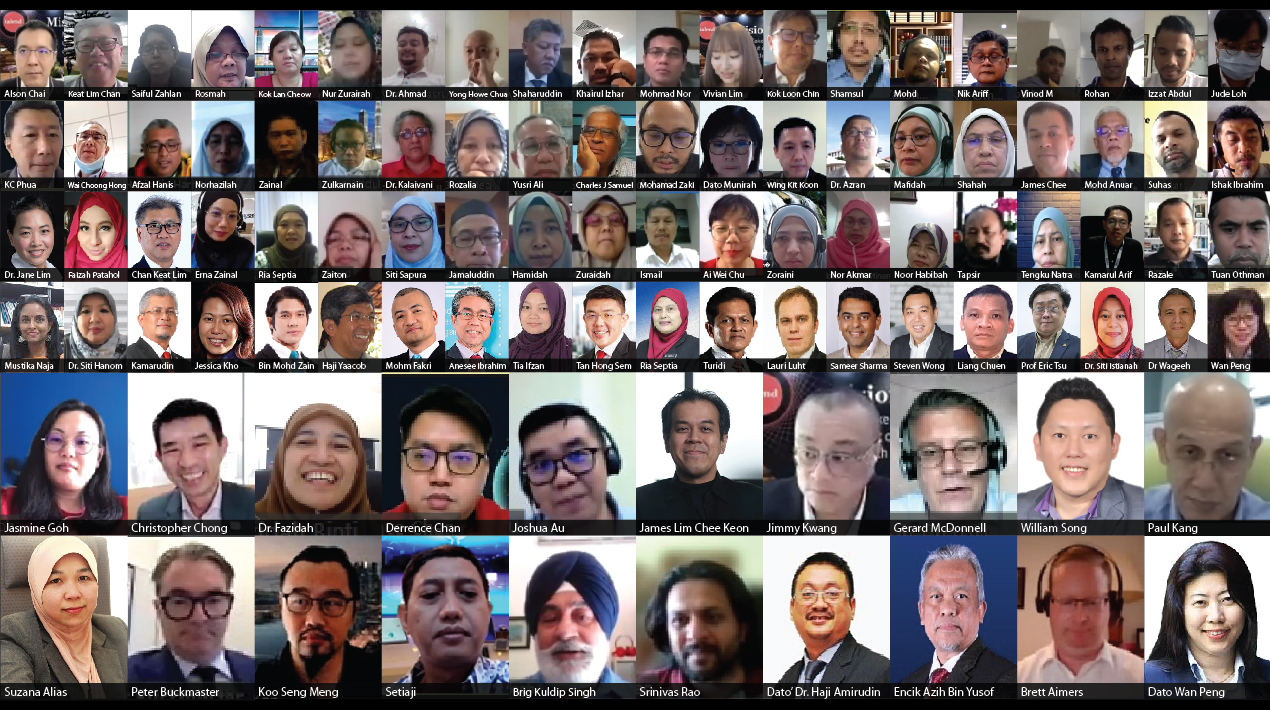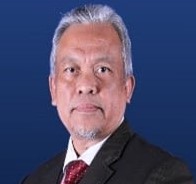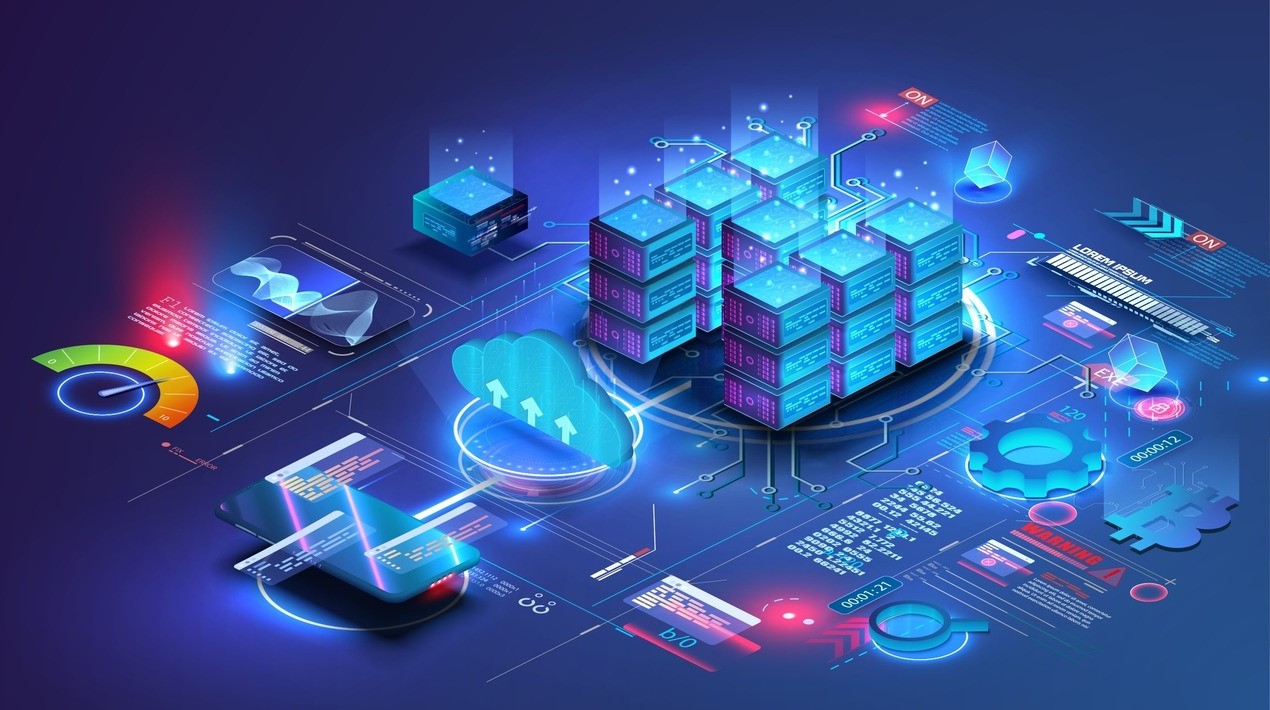
This is Part 1 of a two-part series covering the Malaysia OpenGov Leadership Forum 2021 – Virtual Edition. Read Part 2 here.
COVID-19 has advanced digital transition by years and has foundationally altered the way both the public and private sector across the world deliver services, products and programmes. Government agencies and institutions have fast-tracked digitisation of internal operations and delivery of citizen services. Businesses made temporary solutions, that are morphing into more permanent ones, to meet changing and new demands – far more quickly than was thought possible before the crisis.
Yet, to stay relevant, competitive and, indeed, survive, in this new business and economic environment, requires adopting new technologies, formulating evolving strategies and deploying best practices. In this increasingly VUCA world, governments and businesses across the globe are looking to ramp up their digital transformation to better citizens and clients in the post-COVID-19 era. This was the focal point of the discussion during the Malaysia OpenGov Leadership Forum 2021 – Virtual Edition Day 1 that brought the key decision-makers and influencers together for a strategic level discussion on the issues that matter the most.
Convening the brightest digital minds for a strategic level discussion on the issues that matter the most, the Malaysia OpenGov Leadership Forum offered a unique way of tackling challenges in its virtual edition. Intentionally planned, every activity and facet of the event was designed to let delegates garner exclusive insights from the digital leaders as well as demonstrate their thought-leadership.
As always, the forum provided intimate interaction between key ICT leaders from the Public Sector and the Financial Services Industry who influence and determine digital strategies across agencies and organisations.
Apart from informative presentations from renowned speakers, this year’s Forum continued its award-winning OpenGov Gamification Table (OGT) format in the new OpenGov Gamification Virtual Rooms (OGVRs). Every OpenGov Gamification Virtual Room was a virtual heuristic exercise allowing delegates to learn from varying decision-making scenarios just as they would in the physical world.
Digital transformation in the new normal

To kickstart the session, Mohit Sagar, Group Managing Director and Editor-in-Chief at OpenGov Asia delivered his opening remarks.
As early as 2018, there was consensus on the benefits of remote working and discussion on how to bring this about effectively and securely – but it did not happen in any significant way. Then, at the end of 2019 came a crisis so debilitating that it forced the world to come to a grinding halt almost overnight. Hit by COVID-19, the virus respected no borders, industries or community – devastating all with equal ferocity.
The public and the private sectors worked independently and together to fight the pandemic, coming up with a slew of ad-hoc solutions. Digital initiatives and tech platforms were launched left and right. The demand on the public sector shot up dramatically as citizens, forced to stay at home, looked to the government for necessities to survive. Compounding the situation was the need to urgently manage the sick, the vulnerable and the inaccessible population.
In the early stages, people were excited at the opportunity to work from home, a shift that had been in the offing for a while. Interestingly though, the step was considered a “pivot” – with the connotation of reaction rather than strategic. People and organisations were said to be “pivoting” to manage and mitigate the issues the pandemic brought.
Beyond a doubt, both sectors did their jobs in terms of providing relevant programmes and initiatives throughout the age of COVID-19. But the question remains, were those initiatives innovative and intentional? Was enough done with the available tech? Additionally, as the initial euphoria of remote working wears thin, people, once happy about the shift, realise that the new normal disrupts their work-life balance and their well-being.
The good brings with it the bad, the unsafe and the difficult. Deployment, in normal circumstances, of technology like AI, Cloud and Data Analytics are accompanied by cybersecurity challenges. In the pandemic where almost everything has moved online, cybercrime has mushroomed astronomically.
Knowing this, Mohit challenged the delegates, if you put digital transformation at the heart of your plan, is everything going to be magically in place? Or do we need to take technologies more seriously?
Organisations and institutions must find the right balance in their digital transformation journey using technology. They must also find leadership to achieve the ultimate end goal of a complete digital transformation in the new normal.
In closing, Mohit emphasised the need for agencies and organisations to find the right partner in this digital journey. Not just from the tech sector, but also the government, banking and FSI, to ensure that everyone is on the right path to an ideal digital transformation.
Public services at the centre of digital transformation in the post-COVID-19 era

After Mohit’s opening remarks, the forum heard from Azih Bin Yusof, Deputy Director-General, Information and Communication Technology, Malaysian Administrative Modernisation and Management Planning Unit.
Confirmed by the World Health Organisation on January 12, 2020, Azih acknowledged that the pandemic took the world by storm. In Malaysia, the government enforced a Movement Control Order that started on March 18, 2020, to break the chain of COVID-19. As of February 28, 2021, the nation reported two waves of COVID-19, with the first wave being successfully suppressed in less than 2 months.
Right from the start, as would be expected, there was increased demand for services and rising expectations of virtual services. As remote working became a necessity, there was an urgent need to test the resilience of working virtually and the need to protect data. Additionally, other disrupted sectors were looking to the government to provide adaptive and dynamic regulatory models.
Making the best of the situation, the Malaysian government took the crisis as an opportunities to move towards digital technology to enable government service in the future, fundamentally reshaping the government’s workforce and reinventing the future of regulations.
Azih shared the various initiatives taken by his government to combat the effects of the pandemic. MySejahtera is an application to assist in monitoring the COVID-19 outbreak in the country. It allows users to assess their health risk against COVID-19 and provides the Ministry of Health with the necessary information to plan for early and effective countermeasures and registering for vaccination. The government also launched a National Data Analysis Centre (DOSM) and the Public Sector Data Sharing Policy.
The government has been strong on adopting emerging technologies such as Facial Recognition tech, AI and Automation, a National Digital ID system and big data analytics to improve efficiency and productivity. They improved the government service delivery system through increased digitisation of services.
Malaysia is also focused on digital infrastructure, including their Hybrid Cloud collaboration between private cloud and public cloud systems. The Cloud Service Provider (CSP) services cover Infrastructure as A Service (IAAS), Platform as A Service (PaaS), and Software as A Service (SaaS). MAMPU also implemented a Cloud-First Policy where the value of cloud computing is magnified by requiring agencies to evaluate safe, secure, cloud computing options before making any new investments.
Malaysia aspires to compete and succeed in this new world by ensuring ‘Kemakmuran Bersama’ (Shared Prosperity). The nation firmly believes that digital government plays a critical role in the new normal and should focus on its digital leadership, data, services, infrastructure, and innovation. To this end, it has empowered MAMPU as the sole agency to drive the public sector digital transformation agenda.
Azih conceded that a viable digital government must provide platforms for small scale innovations, improve existing business process, new solutions, develop talent and disperse capabilities. It must have a vision for the future that defines the leadership and collaboration needed between all stakeholders.
COVID-19 impacts on Data Collection, Digitisation and Analytics
After the informative presentation from Azih, the forum moved to a presentation from J.R Helmig, Innovation Lead Global Security Intelligence SAS Institute on how the pandemic affected data collection, digitisation, and analytics.
J.R started by confirming that people, processes, tech, and data make up the ecosystem of data analytics. Analytical foundations, practical outcomes and future-focussed mindsets must take the helm in an effective ecosystem. While not all analytical opportunities apply to all locations, organisations or agencies every time, they are critical to success overall.
COVID-19 accelerated the need for a viable ecosystem of data analytics – not only in terms of healthcare, workforce, and public services but also to combat the rise of online fraud and cybercrimes. Data standardisation and modernisation with proper training would be key to combat these crimes in addition to automating investigative responses.
It was pertinent to note, pre-COVID problems still exist in current analytical efforts. Challenges such as the high volume of incoming data, low quality of incoming report data, a wide variety of data sources being manually integrated, inefficient ways to investigate and handle suspicious cases, limited resources with increasing pressure to perform more efficiently and effectively, manual checks of technical matches to identify the right business match, limited analytics capabilities to identify and analyse networks and relationships and so on.
Organisations must go from being reactive to being observant of what is happening to shape future outcomes. J.R and his team help create an analytical pathway that helps organisations identify their analytical baseline. This analytic continuum acts as the knowledge hub or library for organisations. This greatly reduces tech implementation risks as well as costs.
J.R suggested that organisations should adopt a case management system. An effective case management system must generate solutions whether be it automatically or manually. It must also be populated with any of the data available in the solution that is needed to successfully the desired result.
J.R encouraged everyone to predict and plan their new normal. They should be proactive with ongoing issues such as facial recognition efforts, fake personal protective equipment, news to manipulate stock prices, threats to military readiness or asymmetrical national security threats, just to name a few. Every organisation must anticipate criminality during COVID – both near term and long term – for both direct and indirect impacts, document and improve business processes during the recovery period, and plan for ongoing change – in business operations and consumer behaviour.
What makes Digital Transformation Successful and Sustainable

Moving on from the informative presentation of J.R Helmig, the delegates had an opportunity to hear from Dr Dzaharudin Mansor, National Technology Officer, Microsoft Malaysia.
AI and Automation kick-started during the 4th industrial revolution, and digital transformation is right at the centre of that change, was his opening premise. In today’s day and age, the competition between tech companies and organisations have changed because various transformative technologies are now democratised. Smartphones, drones, sensors, 3D printers, industrial robotics, solar-powered systems, mixed realities, and DNA sequencing are all made available to each user given by different companies, regardless of their structure.
With the increased adoption of these technologies, there are socio-economic trends that drive the need for digital government. The increase in expectations of digital culture is such that everyone expects the ability to interact and receive services in a fully digital operating model.
Cultural migration and urbanisation, where personal mobility creates multi-cultural urban centres, require new models to communicate and serve diverse populations. Citizen trust in government s fundamental – if citizens perceive a lack of digital maturity as an issue of competence it generates distrust in government.
Local and regional economies failing to effectively maintain public systems and infrastructure, create hurdles in attracting businesses and residents. Knowing all these factors, governments need to embrace digital transformation to stay relevant. To be efficient and effective in today’s complex, interlinked and fast-changing environment, governments need to redesign their structures and processes to capitalise on a new set of actors and tools.
Dr Mansor mentioned six tech trends that can enable an open digital government.
- Cloud provides an agile, flexible platform with unlimited scale for innovating quickly, maintaining compliance, and adapting to the latest security threats.
- Open data and advanced analytics paves way for new capabilities for analytics allowing significant improvements in decision making, performance analysis, policy development and financial management.
- AI maturity presents the capability to deliver and govern new models for community living, ranging from transportation optimisation to environmental stewardship.
- Service architecture with new design models allows rapid improvement of services by creating small applications that leverage an integrated data platform (moving away from silos).
- Cybersecurity implies governments can be trusted with public data.
- Mobility, where hardware tools and software platforms support the ability for many jobs to be performed in remote locations and with virtual communications.
Governments can adapt and become more resilient in the new normal by thinking in three basic phases. The first is to respond and navigate the flow of events. Adapt and respond to immediate challenges in real-time, enable remote work, maintain productivity and business continuity. The second is to recover and plan the comeback. Return business to scale quickly, adapt products, services, and business models, focus on value and cost reduction, restart customer demand. The third is to reimagine and shape the new normal. Reimagine and position people, processes, and technology for growth and new opportunities to build resilience post-COVID-19.
Artificial Intelligence and Automation

Taking over, Peter Buckmaster, Director of Digital Experience Design Department of Education New South Wales discussed how Artificial Intelligence has now a part of normal life and specifically education – where traditional methods are changing drastically.
Peter started by saying that AI began in classical philosophy to describe human thinking in a symbolic system. In Jungian psychology, symbols, (and is by interpreting these), symbols were a primary method for making sense of the world. They represented meaning, information and actions. In technology, AI is a machines’ ability to simulate natural intelligence (NI).
AI changing the way we interact and AI changing the way education is delivered. The evolution of AI and Automation has influenced the education sector in many ways. Cognitive Intelligence now plays multiple roles in the sector including grade assessments, improving personalised learning, facilitating connected analytics and programming.
Peter agreed that the academic world is becoming more convenient and personalised thanks to the numerous applications of AI for education and as educational material becomes accessible to all through different technologies.
The usage of bots and automation in the education sector has become widespread while AI and automation are being increasingly used in transcription. AI automates administrative duties, minimising the need for staff to complete mundane, repetitive tasks thus freeing educators to spend more quality time with students.
Customers, (citizens, customers or students), in the new normal expect to engage with service providers 24/7. Digital transformation is the way to be always on and its efficiency is moving us past simple automation to RF and cognitive intelligence. It changes the way education is developed and redefines the way we teach.
Increasing Your Agility with Multi-Cloud Flexibility

After Peter Buckmaster, the delegates were given a presentation from Ryan Tassotti, Enterprise Architect and Principal Engineer, Dell Technologies on how organisations can increase their agility by utilising multi-cloud systems.
Ryan defines the cloud as an on-demand self-service that has broad network access, resource pooling capability, rapid elasticity and can measure services. The cloud has four deployment models – private cloud, community cloud, public cloud and hybrid cloud. The Top 3 objectives driving cloud spending for Asia Pacific’s customers are New technology, Digital Transformation and Cloud-First Strategy.
As an example of Cloud-first policies, Ryan pointed to Malaysia’s MyDigital blueprint. This framework accelerated innovation in the country, allowed eCommerce imperatives for micro and SMEs and promoted better experiences for its citizens.
The fact is, Ryan noted, that the pandemic ushered the world into a new era. The new normal brings new demands and the cloud is set to provide solutions to these new necessities. The world has made a paradigm shift and digital transformation must accelerate with it. Close to three-quarters (74%) of all organisations are investing in on-demand digital services, two-thirds ( 65%) of global GDP will be from digital by 2022 and on-demand models by 2023 will be 15%, up from less than 1% in 2019.
A recent survey of 900 IT leaders across verticals and regions found that 96% of organisations have an executive mandate to leverage cloud technologies. While 89% plan to deploy private cloud infrastructure in the next 12 months, 76% of organisations will leverage multiple clouds environments over the next two years.
Utilising a multi-cloud strategy caters to different workloads. Some organisations value performance, some prioritise data services, while some look at costs and data sovereignty. While hybrid-cloud seems to be the way forward, a hybrid-cloud platform must bring stability. It must stabilise workloads, apps, and data spread across multiple clouds – all in all, a consistent cloud experience for everything.
Ryan advised organisations to find partners in cloud adoption. “There are experts who can help you migrate without pain – why do it alone?”
Cloud adopters must ensure that the platform is consistent throughout. They must avoid hiccups throughout an application’s lifecycle with platforms that extend seamlessly, End-users do not want to be surprised by a new management interface so they must be informed.
Ryan and his team in Dell Technologies promote consistency. They facilitate consulting services, deployment services that accelerate technology adoption, managed services realising digital transformation value for client systems, storage, backup, and converged infrastructure, and education services that develop and retain valuable IT talent through continuous learning.
Ryan is firmly convinced that the future is hybrid, the future is multi-cloud and the Malaysia MyDigital blueprint embraces these advancements.
Cloud Computing for Service Innovation

Ryan Tassotti’s presentation was followed by one from Prof Eric Tsui, Professor and Co-Chair on Deployment of E-Learning, Hong Kong Polytechnic University who discussed how organisations must use the cloud for service innovation.
Using the cloud to manage data is no longer an option, it has become imperative for organisations today. This is more so for the public sector that is striving to stay agile and ensure seamless service delivery to the citizens while continuing to innovating concurrently.
Prof Eric felt that the cloud was the perfect knowledge storm; meaning, data growth from IoT and social media, application and tools in the cloud are growing as time goes by. However, software and hardware alone are not enough to create a successful cloud system. Organisations must know that the people accessing services via the cloud are as important as the tech itself. A trusted network of people and computational resources must be integrated to mix to make the cloud the best digital business model available.
Pertinently, there are different types of cloud connections. First is the machine-to-machine, where hardware is king; second is people-to-machine, where people are utilising services; and lastly is the people-to-people connection where users create their networks using the cloud.
Eric reiterated that The Knowledge Cloud is more than just hardware and software. It encompasses people that invest their trust in the technology and involves the storage of data vital to organisations conducting their digital transformation. People build communities for problem-solving, utilising social media for marketing, exploring, and building new business models, executing strategies at low risk and in real-time, and delivering personalised services.
In light of this, organisations must think outside the box. Cloud technology is disruptive. Adopters must perceive the cloud as a massively scalable backend resource with low upfront costs. They must perceive the cloud as an intelligent knowledge centre with massive data and problem-solving skills such as processors and human integration needs, that has a dynamic computational power.
Eric stressed the key concepts in service innovation – the co-creation of value, dynamic capabilities, enabling vs disruptive, open business models and customer experience. Cloud technology is the perfect digital adjustment to these key concepts.
Organisations use the cloud for cost reduction and data integration, innovation and transforming new segments using the knowledge cloud. But there must be a collaborative effort to achieve higher rewards from the tech. The integration of humans to solve complex problems using the cloud, letting the computer do the problem solving that it is capable to do, and the integration between humans and computers to create solutions.
Eric concluded his presentation by sharing various cloud service providers that organisations could partner with on their journey in cloud adoption and digital transformation in the new normal.
Embracing Big Data and Analytics Today for a Resilient Tomorrow

Brett Aimers, Adjunct Associate Professor, James Cook University Australia followed Eric with a presentation about Big Data and Analytics, exploring how to embrace big data and analytics today for a more resilient tomorrow.
Setting the tone for his session, Brett said major disasters would occur more frequently as time goes by. While COVID-19 has, undoubtedly, been the most disruptive global event since World War II, climate and weather patterns are changing adversely. Therefore, thinking about a resilient society is simply not enough.
In 2019, 396 natural disasters occurred across the globe. Costing more than US$ 146 billion, over 12,000 people lost their lives in these disasters. In a more regional context, Asia experienced 40% of natural disasters and 45% of all attributed deaths in the same year.
With data and information on hand, organisations must utilise big data and analytics more effectively to predict critical events and their impact; and must share this information. Big data, analytics and information sharing are key to survival and economic recovery.
Major disasters lead to major disruptions, loss of life, a sense of helplessness and lack of trust. Big Data and Analytics can create countermeasures to help mitigate these – early detection, advanced warning, maps and layers, decision making and effective communication – creating confidence within the community.
Decision-makers get relevant and timely insights about possible disasters, enabling early decision making that can protect critical assets, (including relocation of their resources) contribute to impact assessment and support economic recovery.
Brett urged the public and private sectors to acknowledge the significant drivers for change. The first is that research indicates that two-thirds of the global population will live in cities by 2050. Another is that spending on disaster recovery is nine times higher than spending on prevention…literally, a stitch in time saves nine.
Brett concluded his presentation on a positive note. While COVID-19 may have an end date, climate change and natural disasters – of the scale critical events are inevitable. But big data, analytics and efficient information sharing can save lives and promote economic recovery.
This is Part 1 of a two-part series covering the Malaysia OpenGov Leadership Forum 2021 – Virtual Edition. Read Part 2 here.
















